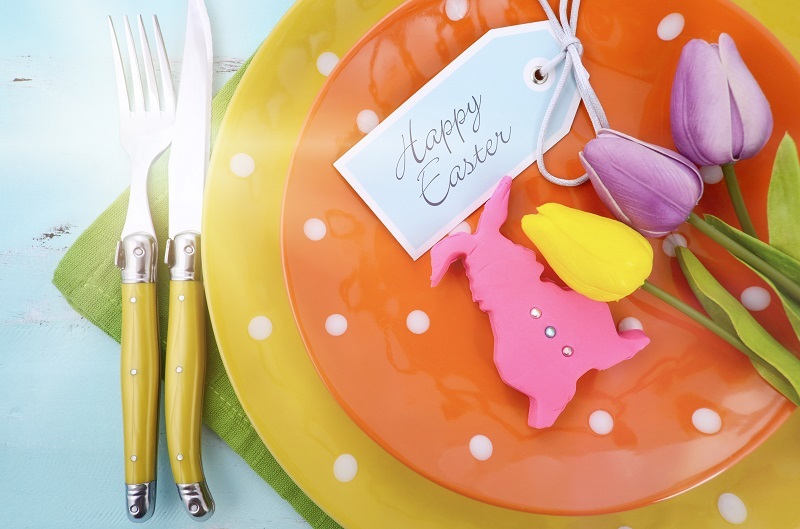Optimizing Your Poinsettia's Life and Beauty
Posted on 13/08/2025
Optimizing Your Poinsettia's Life and Beauty
Poinsettias are widely recognized for their vibrant red hues and festive presence during the holiday season. But true enthusiasts know that with the right strategies, you can not only keep your poinsettia alive beyond December, but also optimize its life span and maximize its natural beauty year-round. In this comprehensive guide, we will reveal proven techniques and expert tips for optimizing your poinsettia's life and ensuring it remains a spectacular centerpiece in your home or garden.
Understanding the Poinsettia: More Than Just a Holiday Plant
The poinsettia (Euphorbia pulcherrima) is native to Mexico and Central America. Contrary to popular belief, its stunning "flowers" are actually colorful bracts -- specialized leaves -- that surround the plant's tiny, yellow true flowers. While most people associate poinsettias with Christmas, learning to nurture them throughout the year can transform them from seasonal decorations to perennial marvels.
The Symbolism of the Poinsettia
- Holiday tradition: Poinsettias have become synonymous with the Christmas season.
- Good fortune: In various cultures, they represent celebration, success, and luck.
- Year-round beauty: With proper care, your poinsettia can be a standout plant any time of year.

Choosing the Right Poinsettia for Optimal Results
Inspecting for Health
To optimize your poinsettia's life and beauty, always begin with a healthy plant:
- Foliage: Look for lush, green leaves free from brown spots or curling.
- Bracts: Choose brightly colored bracts that are not wilting or faded.
- Soil: The planting medium should be moist but not soggy.
- Roots: Avoid root-bound specimens. Gently lift the plant to inspect the root ball if possible.
Choosing the Right Color and Variety
Poinsettias come in a spectrum of colors, including traditional red, white, pink, and even marbled or speckled. Select a variety that complements your decor and personal style. Modern hybrids offer improved disease resistance and longer-lasting color, so consider these options to further optimize your poinsettia's performance.
Perfect Placement: Light and Location Strategies
Maximizing Light for Healthy Growth
Proper lighting is essential for enhancing your poinsettia's lifespan and vibrancy. Place your poinsettia in a location with:
- Bright, indirect sunlight: Around 6-8 hours daily are ideal. Direct sun may scorch the leaves, while insufficient light leads to leaf drop and leggy stems.
- Stable temperature: Keep the plant in an environment between 65-75?F (18-24?C).
- Draft-free location: Shield your poinsettia from cold drafts, excessive heat, and sudden temperature shifts -- these can trigger leaf loss.
Avoiding Placement Pitfalls
Never place your poinsettia near radiators, fireplaces, or chilly windows. If you must keep it near a window, ensure the leaves do not touch the glass, as this can cause frost damage in winter or burns in summer.
Watering Wisely: The Foundation of Healthy Poinsettias
Balancing Moisture for Optimal Growth
Watering is key in optimizing your poinsettia's life and beauty. Follow these essential guidelines:
- Check the soil: Water only when the top inch of soil feels dry to the touch.
- Avoid overwatering: Soggy soil leads to root rot. Always use pots with adequate drainage holes.
- Proper drainage: Never let your poinsettia sit in standing water. Empty drainage trays promptly after watering.
- Consistent schedule: Inconsistent watering can stress the plant, causing bract and leaf drop.
Seasonal Watering Adjustments
During the winter months, when growth slows, reduce the watering frequency. As the plant resumes active growth in spring and summer, increase watering, always checking the soil's moisture first.
Fertilizing for Longevity and Vibrance
When and How to Fertilize
To maximize your poinsettia's beauty and nurture long-term health, implement a thoughtful fertilization routine:
- After blooming: Begin fertilizing only after your poinsettia stops blooming, typically in late winter or early spring.
- Balanced fertilizer: Use a water-soluble, all-purpose houseplant fertilizer, diluted to half the recommended strength.
- Frequency: Apply fertilizer every 3-4 weeks during active growth periods (spring and summer).
- Pause in fall: Cease fertilization in early fall to encourage colorful bract development.
Common Fertilizer Mistakes to Avoid
- Over-fertilizing: Excess nutrients can cause leaf burn and inhibit bract coloring.
- Neglecting feed: Underfed poinsettias may become leggy, pale, and less vibrant.
Pruning Techniques: Shaping for Year-Round Attractiveness
Why Pruning is Important for Poinsettias
Pruning is a vital aspect of optimizing your poinsettia's life and beauty. Regular pruning:
- Encourages bushy, compact growth
- Prevents legginess and unsightly stretching
- Stimulates new shoots and more colorful bracts
How and When to Prune
Follow this pruning schedule for best results:
- Late winter/early spring: After the bracts fade and stem growth slows, cut the plant back to 4-6 inches above the soil.
- Early summer touch-ups: Pinch back new stems to promote branching. Repeat every few weeks as needed, stopping in late summer to allow bract formation.
Pro tip: Always use clean, sharp scissors or pruners to avoid disease introduction.
Addressing Common Poinsettia Problems
Pest Control: Keeping Your Plant Healthy
Optimizing your poinsettia's beauty means keeping it pest-free. Key culprits include:
- Whiteflies: Small, white insects that cluster under leaves and suck plant sap.
- Spider mites: Tiny red or brown insects that create fine webs and stipple leaves.
- Mealybugs: White, cottony pests on stems and leaf joints.
Combat these with regular inspection, and treat infestations with insecticidal soap or neem oil as recommended.
Recognizing and Resolving Disease Issues
- Root rot: Symptoms include wilting, yellowing leaves, and mushy roots. Prevent by ensuring proper drainage and avoiding overwatering.
- Leaf spot: Brown or black spots on leaves, often caused by fungal or bacterial infections. Remove affected foliage and avoid wetting leaves during watering.
If problems persist, consider repotting your poinsettia in fresh, sterile soil.
Encouraging Rebloom: How to Re-Color Your Poinsettia Each Year
The Secret to Reblooming Success
Many owners discard poinsettias after the holiday season, not realizing these remarkable plants can be coaxed into reblooming annually with the right care. To optimize your poinsettia's life and beauty, follow this schedule:
The Photoperiod Process (Light/Dark Treatment)
- Mid-September: Begin providing your plant with 14-16 hours of total darkness each night for 8-10 weeks. Cover with a light-proof box or place in a dark closet.
- Daytime: Return to bright, indirect light for 8-10 hours each day.
- Consistent timing: Any light interruption at night can prevent bract coloration.
Poinsettias are photoperiodic, meaning they require uninterrupted darkness to trigger blooming. By mimicking their native light cycles, you ensure the development of the vivid bracts.
Repotting and Root Health
When and How to Repot for Optimal Growth
Healthy roots are fundamental to a thriving poinsettia. Repot if your plant becomes root-bound or outgrows its container, ideally in late spring or early summer. Use a well-draining, lightweight soil mix and a pot only slightly larger than the current one. Gently loosen root balls and remove any dead or bound roots before replanting.
Extending Lifespan: Overwintering Your Poinsettia
Winter Survival Strategies
- Reduce watering: Let the soil dry more between waterings as growth slows.
- Maintain temperature: Don't expose to cold drafts or freezing conditions.
- Minimize fertilization: Pause all feeding until spring's new growth begins.
With careful overwintering, your poinsettia can last for many years, delivering reliable color each holiday season and lush greenery throughout the rest of the year.
Creative Display Ideas for Optimum Visual Impact
Arranging Poinsettias with Flair
- Table displays: Combine with evergreen branches, pinecones, or metallic ornaments for elegant centerpieces.
- Grouped pots: Display multiple poinsettias of varied colors in decorative containers for a dramatic effect.
- Outdoor accents: In mild climates, use poinsettias in sheltered porches or patios for festive curb appeal.
By integrating your optimized poinsettias into your overall decor, you'll further enhance their beauty and create inspiring focal points at home or events all year long.

Frequently Asked Questions: Poinsettia Care and Optimization
1. Are poinsettias toxic to pets?
Poinsettias are mildly toxic to cats and dogs. Ingestion may cause mild irritation, drooling, or vomiting, but they are not considered highly poisonous. Always keep plants out of reach of curious pets and children.
2. Can my poinsettia live outdoors?
In USDA Zones 9-11, poinsettias can thrive outdoors year-round when protected from frost. In colder climates, keep them as houseplants and only set them outside after frost risk passes.
3. Why are the leaves falling off my poinsettia?
Leaf drop is often due to abrupt temperature changes, drafts, overwatering, or insufficient light. Review your care routine and adjust accordingly for best results.
Conclusion: Celebrate a Year-Round Marvel
Optimizing your poinsettia's life and beauty is about more than extending its survival past the holidays. By following these expert strategies covering light, water, feeding, pruning, and creative display, you can transform your poinsettia into a perennial showstopper. Whether you cherish the classic red or experiment with modern colors, consistent care will ensure your poinsettia flourishes for many seasons to come. Enjoy the lasting allure of this remarkable plant -- and let it bring vibrant joy to your home throughout the entire year.
Latest Posts
Optimizing Your Poinsettia's Life and Beauty
Get to know your birth month flower and what it represents
A Tapestry of Meaning: Peony Flowers, Their Symbolism, and Color
Low Maintenance Wonders: Top 10 Office Plants for Minimal Fuss





